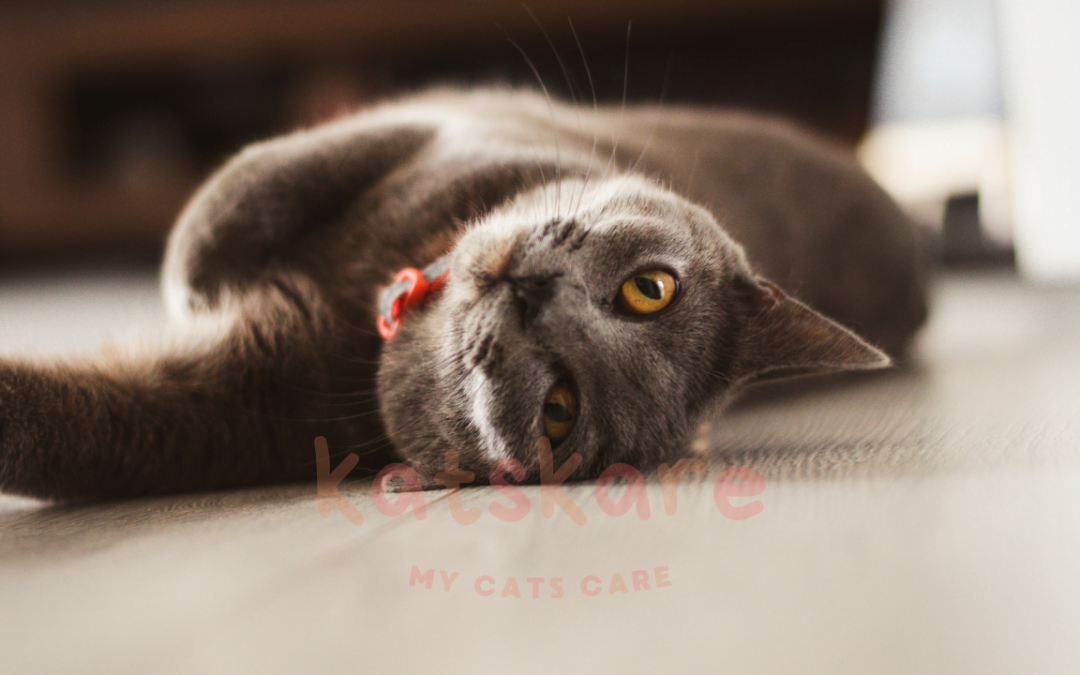
by Muhammed Saeed | Knowledge
Explore the captivating world of British Shorthair cats, celebrated for their round faces, dense coats, and amiable personalities. Uncover their fascinating history, unique traits, care requirements, and why they make wonderful companions in this all-encompassing guide.
The British Shorthair Cat: A Complete Guide to Their Charming Characteristics and Rich History
The British Shorthair cat, with its round, expressive eyes and plush, dense coat, is an endearing and beloved breed that has captured the hearts of cat enthusiasts worldwide. Originally hailing from Great Britain, these felines boast a rich history dating back centuries. With their amiable personalities and distinctive appearance, British Shorthairs have remained popular pets for generations. In this comprehensive guide, we will delve into the captivating world of British Shorthair cats, exploring their origins, charming characteristics, care needs, and why they make exceptional companions.
1. The Historical Roots of the British Shorthair Cat
The roots of the British Shorthair cat can be traced back to ancient times when they were brought to Britain by the Romans to help control rodent populations. Over the centuries, these cats interbred with other felines, eventually forming the foundation for the British Shorthair breed we know today. They became popular during the late 19th century, and careful breeding efforts led to the preservation of their distinctive characteristics.
2. Distinctive Physical Characteristics
The British Shorthair cat is instantly recognizable due to its round face, large, expressive eyes, and sturdy build. They have a dense and plush coat with a wide array of colors and patterns, ranging from classic blue-gray to white, black, cream, and various tabby patterns. Their compact bodies and broad chests exude a sense of strength and stability, making them truly charming and appealing felines.
3. The Gentle and Laid-Back Personality
British Shorthair cats are known for their gentle and laid-back personalities. They have a calm and easy-going nature, which makes them well-suited for indoor living. While they are not as vocal as some other breeds, they are affectionate and enjoy spending time with their human companions. British Shorthairs are content to sit on your lap or relax nearby, appreciating the quieter moments of life.
4. A Family-Friendly Companion
With their friendly and patient demeanor, British Shorthair cats are excellent family pets. They are generally good with children and get along well with other pets, making them a wonderful addition to households with multiple animals. Their adaptability and social nature ensure they integrate smoothly into a family setting.
5. British Shorthair Health Considerations
British Shorthair cats are generally robust and healthy. However, they may be prone to certain genetic health conditions, such as hypertrophic cardiomyopathy (HCM) and polycystic kidney disease (PKD). Regular veterinary check-ups are essential to monitor their overall health and address any potential issues promptly. Responsible breeders perform genetic testing to reduce the risk of hereditary conditions in their breeding lines.
6. Low-Maintenance Grooming
Despite their dense coats, British Shorthair cats are relatively low-maintenance when it comes to grooming. Their fur requires regular brushing to minimize shedding and matting, particularly during seasonal changes. Additionally, regular dental care and nail trimming should be a part of their grooming routine, ensuring their overall well-being.
7. The Fascinating Array of Colors and Patterns
The British Shorthair breed boasts an impressive array of colors and patterns. From the classic blue to cinnamon, silver, and golden hues, their coat colors offer a delightful variety. Moreover, they come in various eye-catching patterns, such as tabby, colorpoint, and bicolor, further adding to their charm and appeal.
8. British Shorthair as a Beloved Companion
The British Shorthair cat’s winning combination of endearing physical features, gentle personality, and low-maintenance care requirements has made them cherished companions for countless cat lovers. Whether you live in a cozy apartment or a spacious house, these adaptable and content felines will bring joy and comfort to your life.
Conclusion
In conclusion, the British Shorthair cat is a captivating breed with a rich history and an abundance of charm. From their round faces and expressive eyes to their dense coats in various colors and patterns, British Shorthairs are a feast for the eyes. Their gentle and laid-back personalities make them excellent companions for families and individuals alike. With their low-maintenance grooming needs and affectionate nature, British Shorthair cats offer unconditional love and companionship, enriching the lives of those fortunate enough to share their homes with these endearing felines.
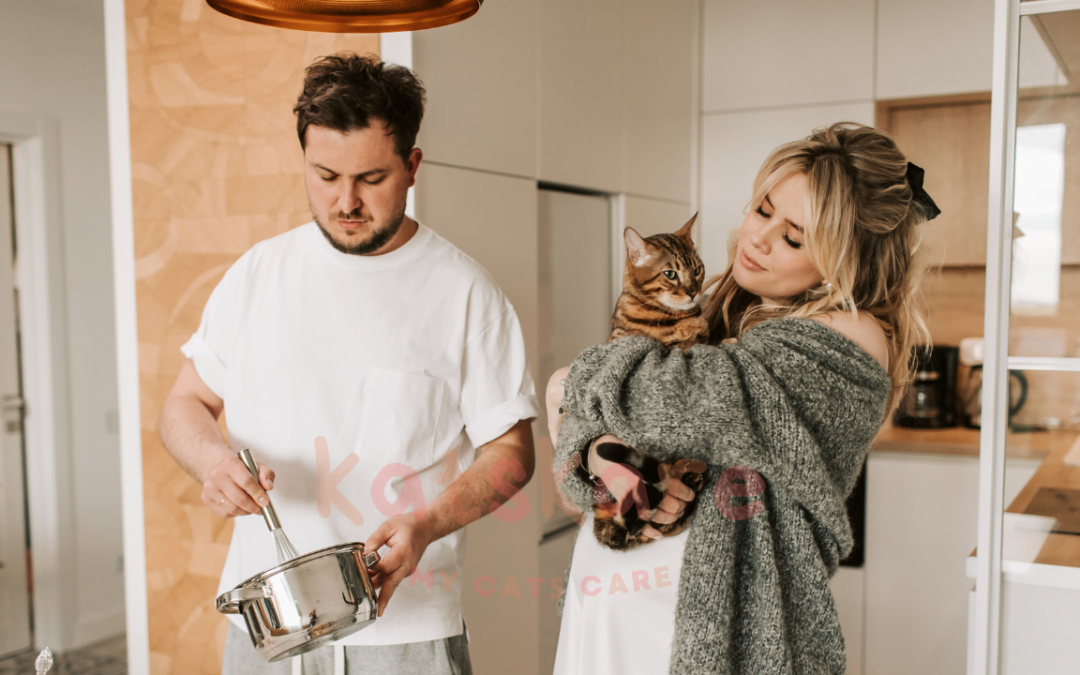
by Muhammed Saeed | Fun Games
A day in the life of a cat owner usually begins in the early morning when you get up and eat breakfast. After breakfast, it’s time to give your cat some love and cuddles. Give them a good brushing, clean their litter box and feed them.
Next, it’s time for some playtime with your cat. If you have the energy, run around with them and toss a small toy that they love to chase. If you’re tired, spend some time petting them while they sit in your lap and purr.
Once the day is warming up, it’s time to go outside. Get your cat comfortable in a harness and take them out for a leisurely stroll around the neighborhood. When you return, give your cat some fresh air by leaving the door open a bit while you get some work done or catch up on some chores.
As the day progresses, it’s time to relax with your cat. Spend some time cuddling with them on the couch or snuggle them up in bed. Wrap up the day with some more playtime and make sure your cat is well-fed and clean before night.
Your day ends when it’s time to put your cat to bed. Pet them gently, turn down the lights and let them snuggle up in their bed for the night.
The day is done and it’s time for you to get some rest as well. Enjoy it because tomorrow you get to do it all over again!
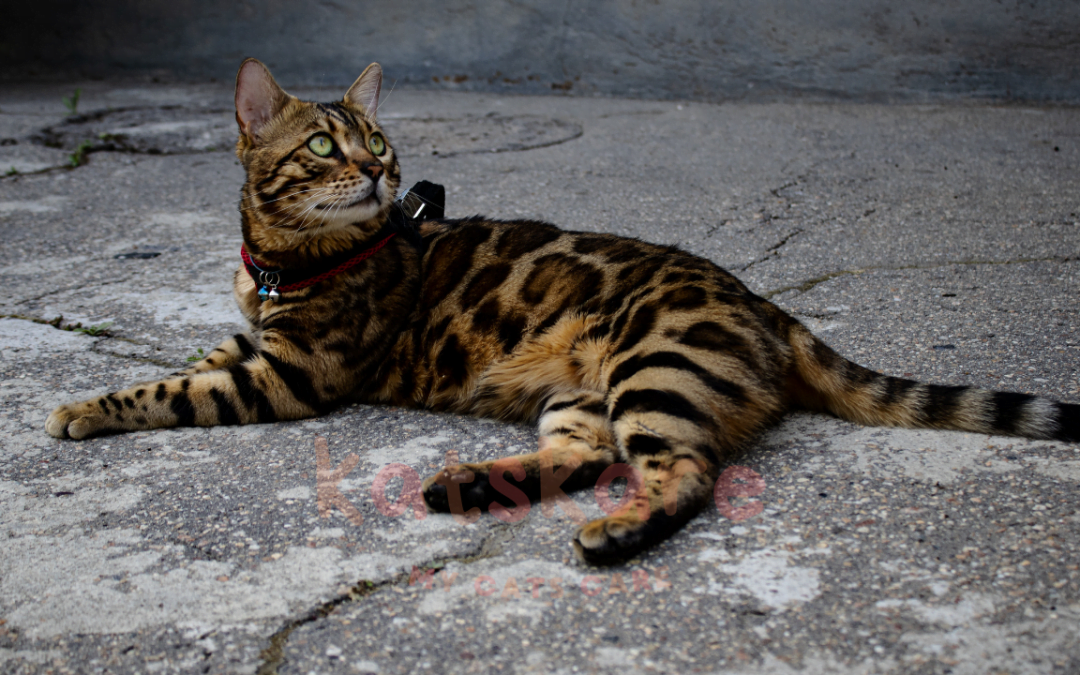
by Muhammed Saeed | Knowledge
Dive into the captivating world of Bengal cats, celebrated for their striking resemblance to their wild ancestors and engaging playfulness. Explore their fascinating history, unique traits, care requirements, and why they make exceptional companions in this comprehensive guide.
The Exotic Bengal Cat: Unraveling the Allure of Their Wild Beauty and Playful Personality
The Bengal cat, with its mesmerizing appearance and playful demeanor, is a breed that exudes the spirit of the wild. Recognized for their striking resemblance to their distant ancestors, the Asian leopard cat, Bengal cats have charmed cat enthusiasts with their exotic allure. With a history that began from crossing domestic cats with the Asian leopard cat, this breed has gained popularity for its unique coat and engaging personality. In this comprehensive guide, we will delve into the captivating world of Bengal cats, exploring their origins, distinctive characteristics, care needs, and why they make exceptional companions.
1. The Historical Origins of the Bengal Cat
The Bengal cat’s journey as a breed began in the 1960s when a Californian breeder named Jean S. Mill crossed domestic cats with the Asian leopard cat (Prionailurus bengalensis). The goal was to combine the beauty of a wild-looking coat with the gentle temperament of a domestic cat. The resulting breed, the Bengal cat, quickly captured the attention of cat lovers, and through selective breeding, they were recognized as an official breed in the 1980s.
2. Distinctive Physical Characteristics
Bengal cats are known for their striking and exotic appearance. They have a unique coat that resembles that of their wild ancestors, with rosettes or spots and a shimmering pelt that often looks like it’s been sprinkled with glitter. Their coat can come in various colors, including brown, snow, silver, and charcoal. Bengal cats have muscular bodies and expressive eyes that can be green, gold, or hazel.
3. The Playful and Energetic Personality
Bengal cats are highly energetic and known for their playful and engaging personalities. They possess a love for playtime and often enjoy interactive toys and puzzles that challenge their intelligence. Their inquisitive nature and agility make them excellent climbers and jumpers, so providing vertical spaces and opportunities for physical activity is essential to keep them mentally and physically stimulated.
4. Low-Maintenance Grooming
Despite their luxurious appearance, Bengal cats are relatively low-maintenance when it comes to grooming. Their short to medium-length coat requires minimal brushing to keep it in good condition. Regular dental care and nail trimming are recommended, as with all cats, to ensure their overall well-being.
5. Bengal Health Considerations
Bengal cats are generally healthy and robust. However, as with all breeds, they may be prone to certain health issues, such as heart disease and eye conditions. Regular veterinary check-ups and a balanced diet are crucial to maintain their overall health and well-being. Reputable breeders perform genetic testing to reduce the risk of hereditary conditions in their breeding lines.
6. The Bengal Cat’s Affectionate Nature
Bengal cats form strong bonds with their human families and can be affectionate and loving companions. While they may have a wild appearance, they are typically domesticated and enjoy interacting with their human companions. Many Bengal cats enjoy being around people and are often described as being dog-like in their devotion and behavior.
7. Bengal Cats as Indoor Companions
Due to their wild ancestry, Bengal cats are usually kept indoors to protect them from potential dangers and to prevent any negative impact on local wildlife. They can be content living indoors as long as they are provided with plenty of mental and physical stimulation. Interactive play sessions and puzzle toys can help keep them happy and satisfied.
Conclusion
In conclusion, the Bengal cat is an exotic and captivating breed that combines the allure of the wild with the charm of a domestic feline. With their striking appearance, playful personality, and affectionate nature, Bengal cats bring a touch of the exotic to any household. As engaging and intelligent companions, they thrive in environments that provide ample opportunities for play, mental stimulation, and human interaction. By understanding and meeting their unique needs, Bengal cats can live happy and fulfilling lives as cherished members of their human families, enchanting all who have the pleasure of sharing their homes with these extraordinary felines.
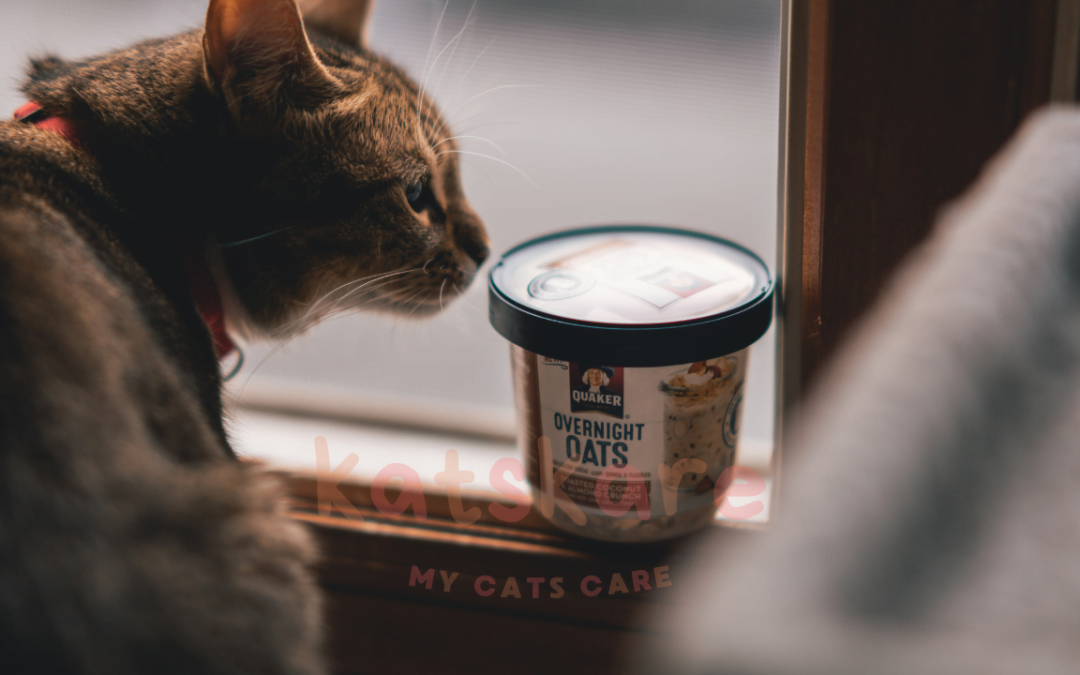
by Muhammed Saeed | Tips
Kittens are one of the cutest and most lovable creatures around. They are also very fragile and need a lot of care and attention. Proper nutrition and health care is essential for a kitten’s growth and development. Here are some essential tips to ensure your kitten’s health and wellbeing.
- Feeding: Feed your kitten a high-quality, balanced diet. Kittens require a lot of energy, so a diet high in proteins and fats is recommended. Avoid feeding your kitten processed food as this can be unhealthy. Make sure to feed them the appropriate amount of food at regular intervals.
- Hydration: Kittens need plenty of fresh water, so make sure to always provide a clean bowl of water for your kitten.
- Exercise: Kittens love to play, so make sure to provide plenty of toys and opportunities to exercise. This will help to keep them healthy and fit.
- Grooming: Regular brushing and combing will help to keep your kitten’s coat healthy and free from tangles and mats.
- Vaccinations: Make sure to get your kitten vaccinated against common illnesses. Ask your veterinarian for advice on the best vaccines for your kitten.
- Vet Visits: Regular visits to the vet will help to ensure your kitten stays healthy and free from any illnesses or diseases.
By following these tips, you can help to ensure that your kitten stays healthy and happy. If you have any questions about your kitten’s nutrition and health, make sure to consult your veterinarian.
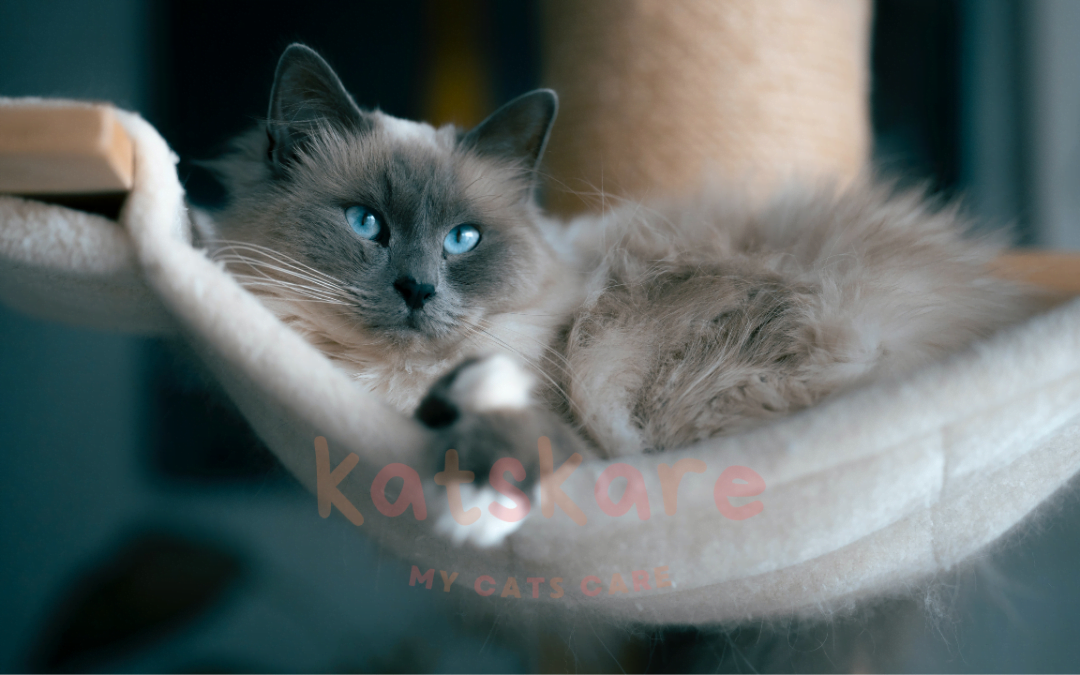
by Muhammed Saeed | Knowledge
Discover the captivating world of Ragdoll cats, known for their docile temperament and striking appearance. Learn about their history, care, personality, and why they make fantastic companions in this comprehensive guide.
The Ragdoll Cat: A Complete Guide to Their Gentle Nature and Unique Traits
Ragdoll cats are one of the most enchanting and sought-after cat breeds worldwide. Renowned for their striking blue eyes, luxurious semi-long fur, and docile demeanor, Ragdolls have captured the hearts of cat enthusiasts and pet owners alike. This gentle and affectionate breed has a fascinating history and a range of unique traits that make them stand out among feline companions. In this comprehensive guide, we will delve into the world of Ragdoll cats, exploring their origins, characteristics, care requirements, and why they make excellent family pets.
1. The Origins of the Ragdoll Cat
The story of the Ragdoll cat began in the early 1960s when a white Persian cat named Josephine was injured and subsequently bred to a Birman or Burmese-like cat. This breeding program was led by Ann Baker, a cat enthusiast from Riverside, California, who noticed the exceptional temperament and beauty of Josephine’s kittens. The resulting kittens displayed unique traits, including a tendency to go limp and relaxed when picked up, thus inspiring the name “Ragdoll.”
2. Distinctive Physical Characteristics
Ragdolls are large, robust cats with distinctive physical features that set them apart from other breeds. They have striking blue, oval-shaped eyes that can come in various shades, such as sapphire blue and aqua. Their semi-long fur is soft and silky, with a pointed color pattern similar to that of Siamese cats. The points, which include the ears, face, legs, and tail, are darker than the rest of their body, creating a captivating contrast.
3. The Gentle and Loving Personality
One of the most endearing traits of Ragdoll cats is their gentle and affectionate nature. They are known for being “puppy-like” cats, often following their owners around the house and seeking attention and affection. Ragdolls are not typically aloof like some other cat breeds; instead, they enjoy cuddling and are often referred to as “lap cats” due to their love for sitting on their owners’ laps.
4. An Ideal Family Companion
Ragdolls are excellent family pets and get along well with children and other animals. Their patient and tolerant disposition makes them suitable for households with energetic kids, and they tend to adapt well to multi-pet households. However, it’s essential to supervise interactions between cats and young children to ensure a harmonious environment for everyone involved.
5. Ragdolls and Their Unique “Floppy” Trait
One of the most intriguing features of Ragdoll cats is their tendency to go limp and relaxed when picked up, known as “going limp” or “flopping.” This behavior is a result of their docile nature, and it’s essential to handle Ragdolls with care, supporting their bodies properly to avoid injury. Not all Ragdolls exhibit this trait to the same degree, as individual personalities can vary.
6. Proper Care and Grooming
Ragdolls have semi-long fur that requires regular grooming to prevent matting and tangling. Weekly brushing is usually sufficient to keep their coat in good condition. Additionally, as with all cats, regular dental care, nail trimming, and ear cleaning should be part of their grooming routine. Ragdolls are also prone to hairballs, so providing them with a balanced diet and access to fresh water is crucial to their overall health.
7. Ragdoll Health Considerations
Like all purebred cats, Ragdolls are susceptible to certain health issues. These may include hypertrophic cardiomyopathy (HCM), a heart condition, and polycystic kidney disease (PKD). Responsible breeders perform genetic testing to reduce the risk of passing these conditions to offspring. Adopting from reputable breeders or rescue organizations and scheduling regular veterinary check-ups are essential to ensure the well-being of your Ragdoll companion.
8. Ragdoll Colors and Patterns
Ragdolls come in various colors and patterns, each with its unique beauty. The six main Ragdoll colors are seal, blue, chocolate, lilac, red, and cream. These colors can appear in one of three patterns: colorpoint, mitted, or bicolor. Colorpoint Ragdolls have darker points with a lighter body, while mitted Ragdolls have white paws and sometimes a white chin and belly. Bicolor Ragdolls exhibit a more extensive white area on their bodies, often with a recognizable “V” shape on their faces.
Conclusion
In conclusion, the Ragdoll cat is an extraordinary breed that offers much more than just stunning looks. Their gentle and loving nature, unique “floppy” trait, and adaptability to various environments make them wonderful companions for families and individuals alike. When considering adding a Ragdoll to your household, remember the importance of finding a reputable breeder or adopting from a rescue organization to ensure the health and well-being of your new feline friend. With proper care and affection, a Ragdoll cat will undoubtedly bring joy and enchantment into your life for many years to come.





